There is a piece of pseudo code of a breadth first search on P.303 of OnLisp which is show below. For the graph below, it will first process node 1, and then put node 2, 3 and 4 into the queue and then just iteratively call itself again. Then, it will proceed with node 4, which is at the beginning of the queue. This in turn will put node 7 and 8 into beginning of the queue and so on.
Finally, the path it traversed will be 1->4->7-11->12->8->3->2->5->9->10->6 which is depth first search. Am I wrong here?

(define (path node1 node2)
(bf-path node2 (list (list node1))))
(define (bf-path dest queue)
(if (null? queue)
'@
(let* ((path (car queue))
(node (car path)))
(if (eq? node dest)
(cdr (reverse path))
(bf-path dest
(append (cdr queue)
(map (lambda (n)
(cons n path))
(neighbors node))))))))